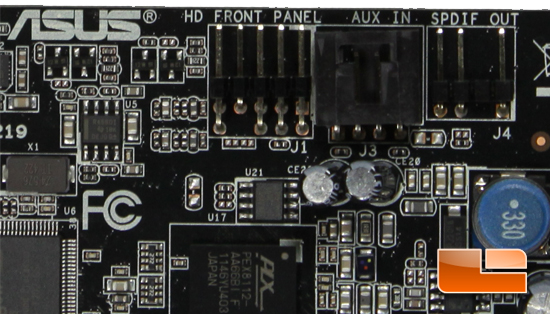ASUS Xonar DGX and Xonar DSX Audio Cards Reviews
Introducing the ASUS Xonar DGX and DSX
Its unfortunate that desktop sound cards are becoming less popular. Many years ago, sound cards with their dedicated audio processors could genuinely benefit gamers and their computers when CPUs were much slower. Nowadays, sound cards are being displaced by such factors as fast CPUs, increasing usage of software audio processing, and improved motherboard audio. Additionally, quality listening hardware is necessary to really hear the difference and the cost of good headphones or speakers is another cost burden many people dont want to deal with. Cheap audio solutions are acceptable to most people and that’s fine, but a more recent to insult to high-end audio is the development of trendy headphone fashion currently led by Beats by Dr. Dre, though I digress.
Nevertheless, there will always users who demand the benefits sound cards can bring to the table. Audiophiles demand sound quality, home theater PC users can utilize the outputs and connectivity, and gamers can step up their game with accurate positional audio. ASUS has tackled these challenges with its Xonar sound card line-up. Today were looking at the two budget Xonar cards, the DGX and the DSX, though ASUS has made an entire range of Xonar solutions. Among them are the Essence ST and STX which are targeted at home audio enthusiasts, the ROG Phoebus which complements the gamers arsenal, and the Essence One DACs made for the most hardcore of audiophiles.

Its been a very long time Legit Reviews has looked at a desktop sound card. Its also quite special that ASUS sent two which allows us to make for a comparison. However, there was much to catch up on and it took me a considerable amount of research on community findings and hours of careful listening to make this review as informative as I can.

The Xonar DGX and DSX are PCI-E versions of the older Xonar DG and DS respectively, both which used the vanilla PCI interface. There are two clear advantages of using the newer PCI-E versions: these cards are compatible on motherboards that only have PCI-E slots and the PCI-E bus can provide all needed power thus eliminating the need for an additional power supply plug.
When it comes to online pricing you can find the ASUS Xonar DGX runs $39.57 shipped and the ASUS Xonar DSX costs $59.24 shipped. All ASUS Xonar cards carry a 3 year warranty.

|
Xonar DGX |
Xonar DSX |
|
|
Channels |
6 |
8 |
|
Output Signal-to-Noise Ratio (A-Weighted) (Front-out) |
105 dB |
107 dB |
|
Input Signal-to-Noise Ratio (A-Weighted) |
103 dB |
100 dB |
|
Output THD+N at 1kHz (Front-out) |
Up to 0.0025% (-92 dB) |
Up to 0.0017% (-95 dB) |
|
Input THD+N at 1kHz |
Up to 0.0022% (-93 dB) |
Up to 0.0017% (-95 dB) |
|
Frequency Response (-3dB, 24bit/96KHz input) |
10 Hz to 48 KHz |
10 Hz to 48 KHz |
|
Interface |
PCI-E |
PCI-E |
|
Audio Processor |
C-Media Oxygen HD CMI8786 |
ASUS AV66 |
|
Digital-to-analog converter (DAC) |
Cirrus Logic CS4361 |
Wolfson WM8766G |
|
Amplifier |
Texas Instruments DRV601 |
-N/A- |
|
Op Amp |
Japan Radio Corp. JRC5532 |
Texas Instruments NE55329 (swappable) |
|
Analog-to-Digital converter |
Cirrus Logic CS4245 |
Wolfson WM8776S |
|
Maximum playback quality |
96KHz/24bit |
192KHz/24bit |
|
Maximum recording quality |
96KHz/24bit |
192KHz/24bit |
|
Base Price |
$49.99 (MSRP) |
$59.99 (MSRP) |
The technical specifications table above highly indicates a myriad of hardware differences between the DGX and the DSX. Predictably, there are differences in their audio characteristics which I will explain further on.

Comments are closed.